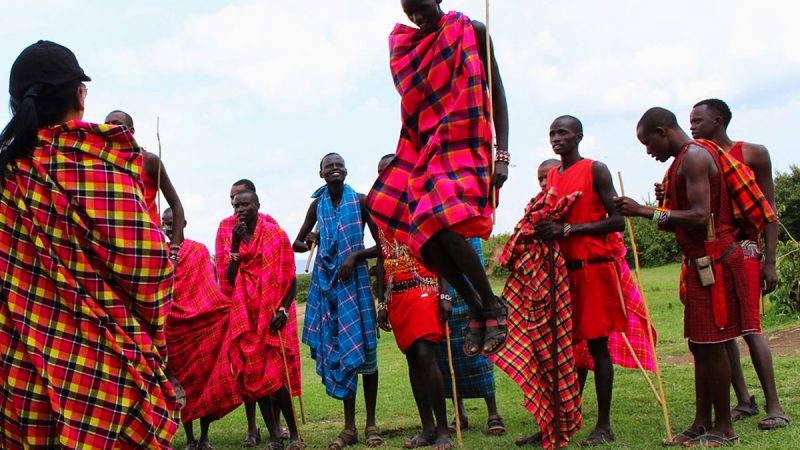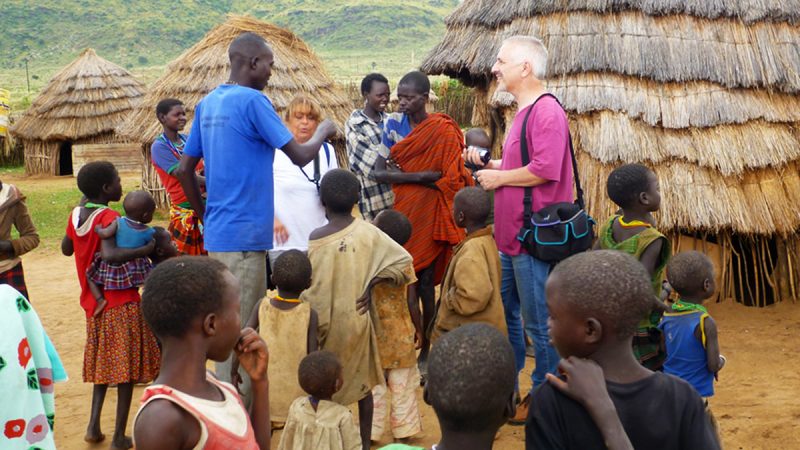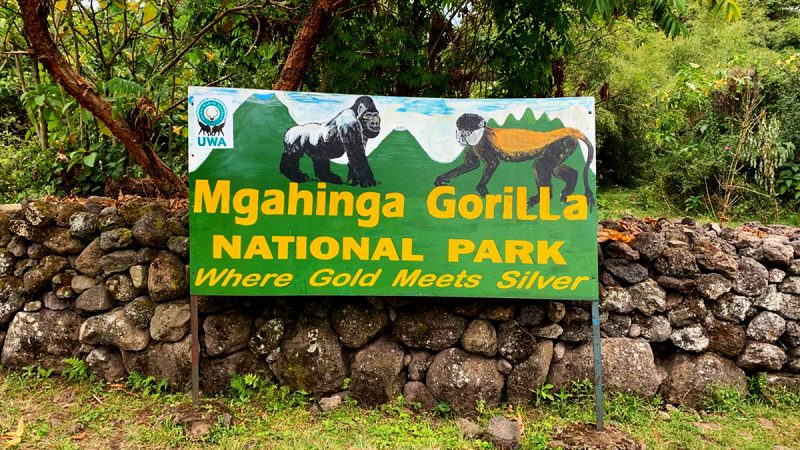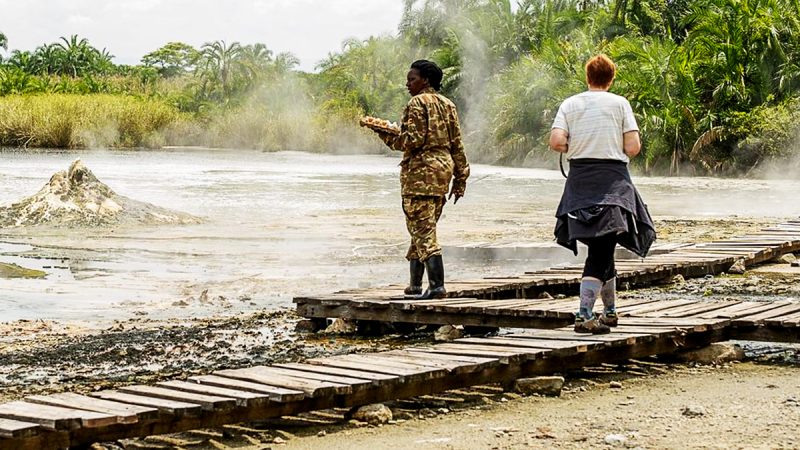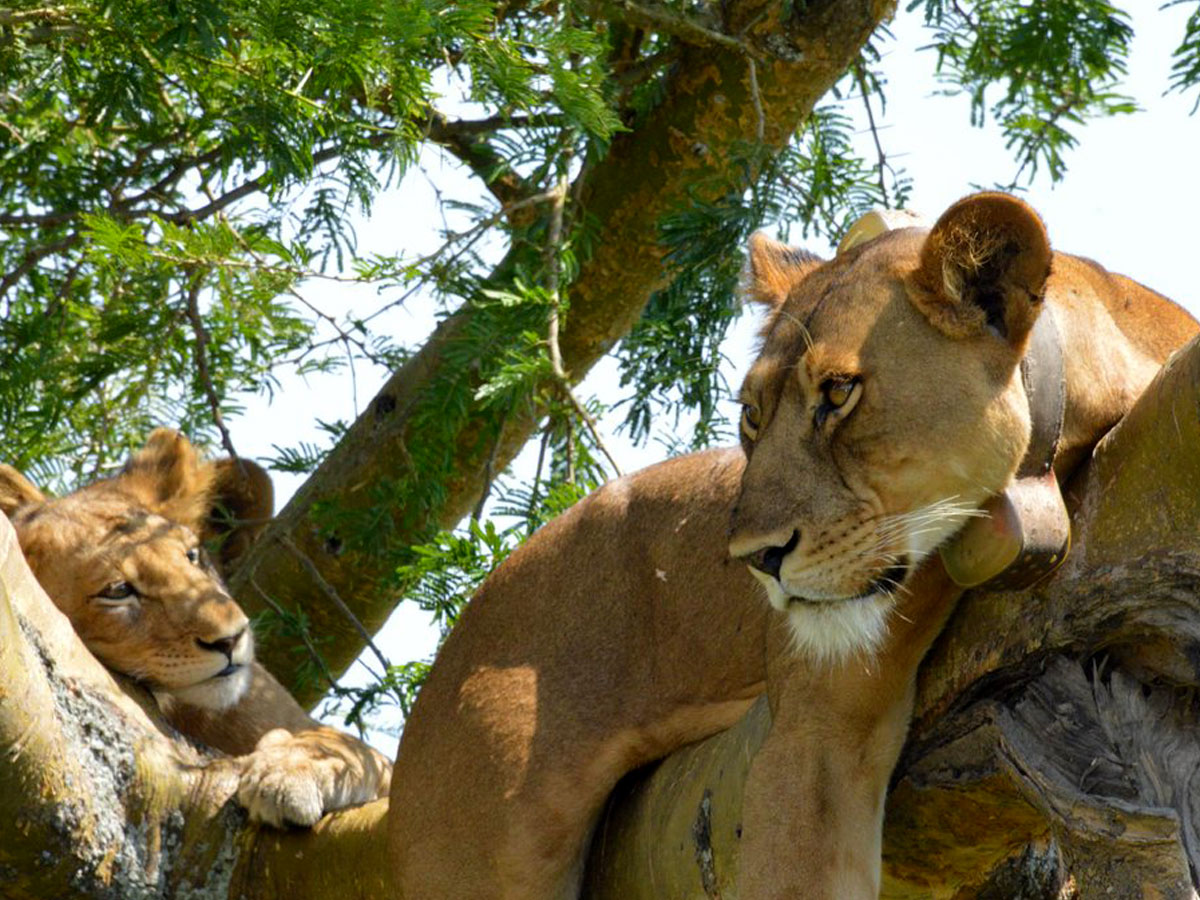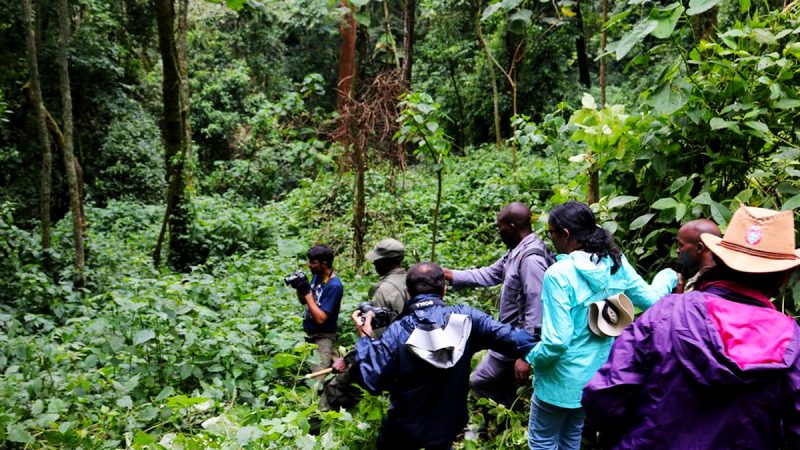This is Uganda’s oldest park. Queen Elizabeth national park with the Maramagambo forest, kyambura and kigezi wildlife reserve form a large conservation area recognized as one of the most diverse ecosystems in Africa. The park is also known for its volcanic cones and deep craters with vegetation as well as water.
Several crater lakes are spread in the northern side of the park including the salty lakes of Katwe and Bunyampaka from which salt is extracted. It is crossed by the Equator and the Kazinga channel, a water body that connects two lakes, George and Edward. The park is largely savannah and woodland with a large forest in Maramagambo and within the Kyambura Gorge.
Biodiversity: The Park is home to 95 mammals with ten primate species which include chimpanzees and monkeys. Elephants, Lions, hyenas, buffaloes, leopards, Waterbucks, giant forest hog, topi. Crocodiles and hundreds of hippos are easily seen along the Kazinga channel. Over 600 forest, water and grassland bird species have been recorded in the park. These include African Spoonbill, Grey headed Gull, Green backed Heron, Three Banded Plover, Great White Pelican, and Flappet Lark.
Size: 1978 sq.km
Location: Western Uganda, spreading to the border with the Democratic republic of Congo.
Accessibility: Entebbe-Kampala-Mbarara-Bushenyi-Mweya 460 km
Tourism activities: Game drives, Boat cruises, experiential walks, nature walks in Maramagambo forest, bird watching, chimpanzee tracking in Kyambura and cultural performance at Hamkungu village.




